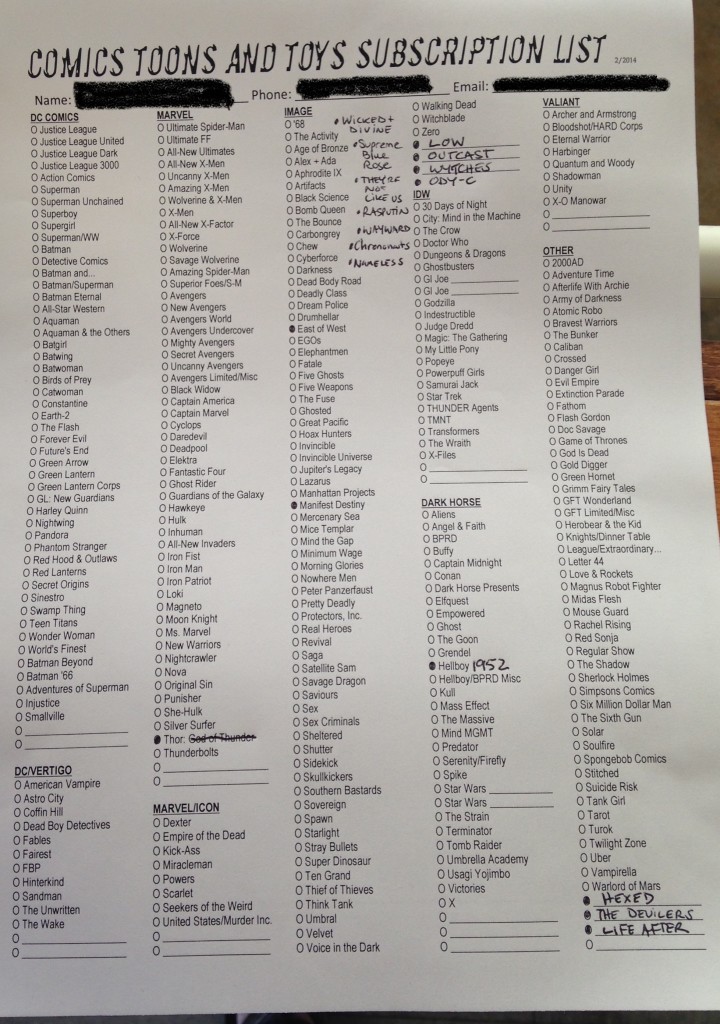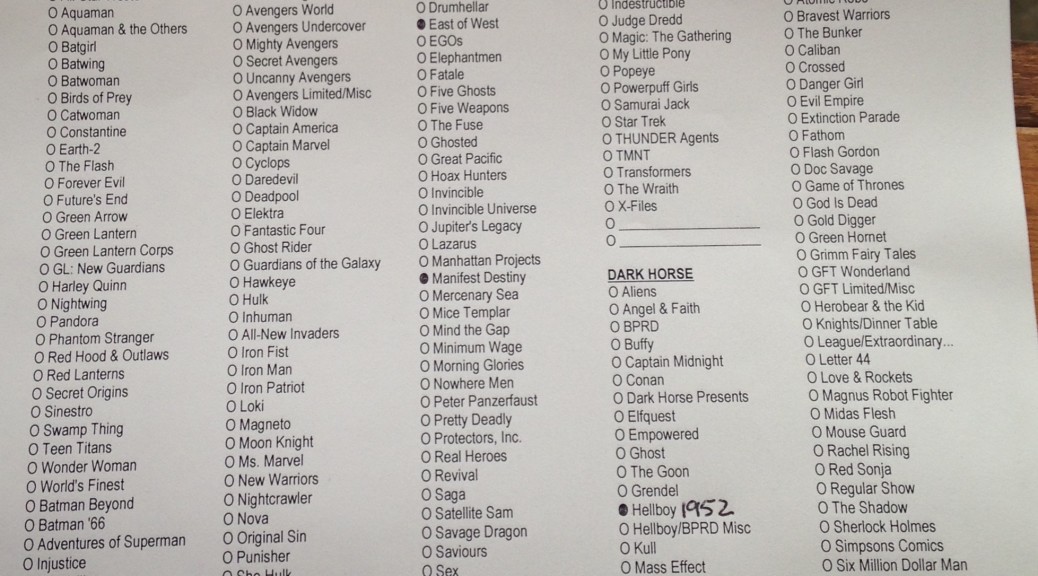Those who study comics are often avid consumers of the medium. How do I select comics for myself? I cannot read or afford everything. Nor is every comic equal in my eyes as an object of study. What does my list say about me? Or about comics today?
This post and my next outline my pull-list as an extension of my scholarly interests. These items suit my eclectic tastes, but they also identify several trends in recent publishing themes (especially from Image). I could say that the Gods Have Returned, but that seems overly simple. As A. David Lewis’ recently released American Comics, Literary Theory and Religion makes the case for the centrality of the superhero afterlife, I think there’s a broader case to be made for the emergence of religious themes as the narrative choice of the day. The gods have returned, yes, but we’re also going to hell (Hellboy in Hell), heaven/hell (The Life After), and bringing all of the spirits along for the ride (Wytches, Wayward, and Hexed). It’s a veritable Great Awakening out there, readers.
Here’s what my physical list looks like. It is surely missing at least another half-dozen titles I’m currently vetting for their pull-worthiness. This is from my local comic shop in Irvine, California:

As you can tell, my love for Image’s title selection is literally overflowing. I shun the conventional superhero titles from DC and Marvel. (I read the latest Thor but I have recently dropped Ms. Marvel when it became apparent that her religious identity was becoming more gimmick than substance and when Marvel decided her character would be crossing over into multiple other titles.) For clarity this makes my list:
- Low
- East of West
- The Wicked + The Divine
- Manifest Destiny
- Supreme Blue Rose
- They’re Not Like Us
- Rasputin
- Wayward
- Chrononauts
- Nameless
- Hellboy: 1952
- Outcast
- Wytches
- Ody-C
- Hexed
- The Devilers
- The Life After
See if you can imagine what drives this diverse collection. Continue reading What Makes A Scholar’s Pull-List? Part 1
